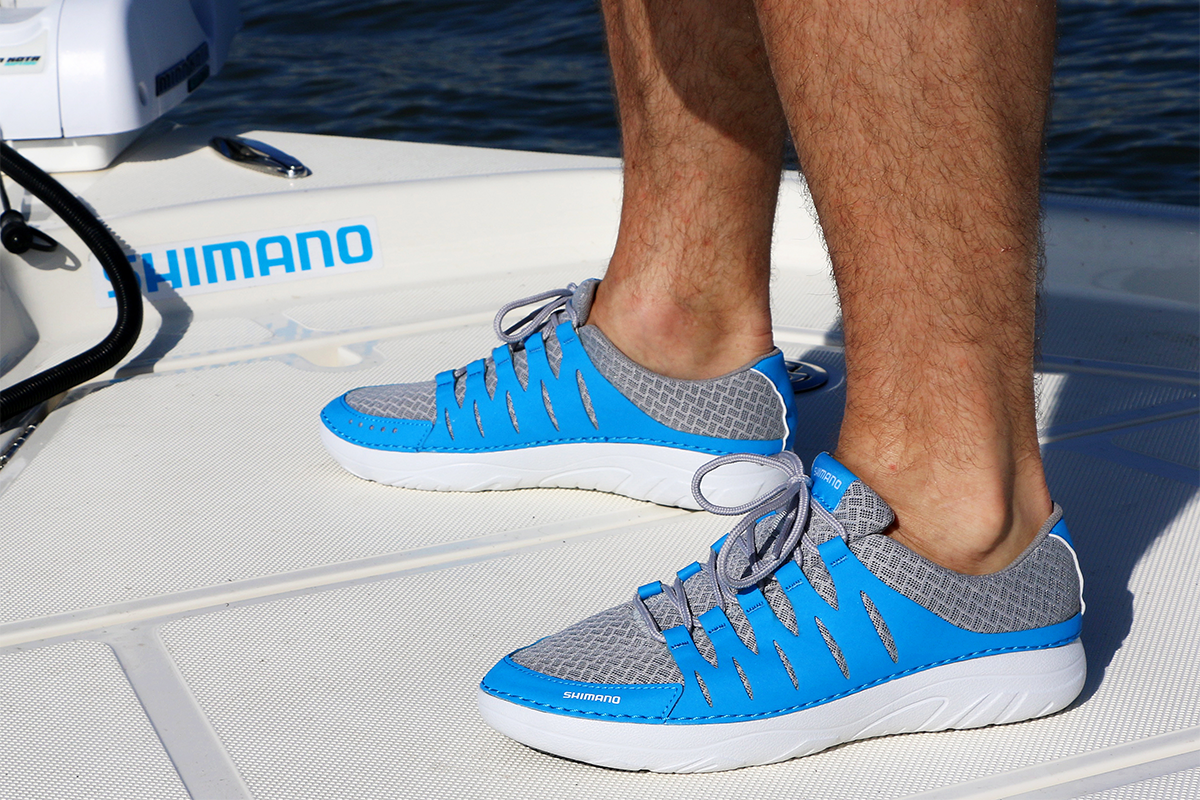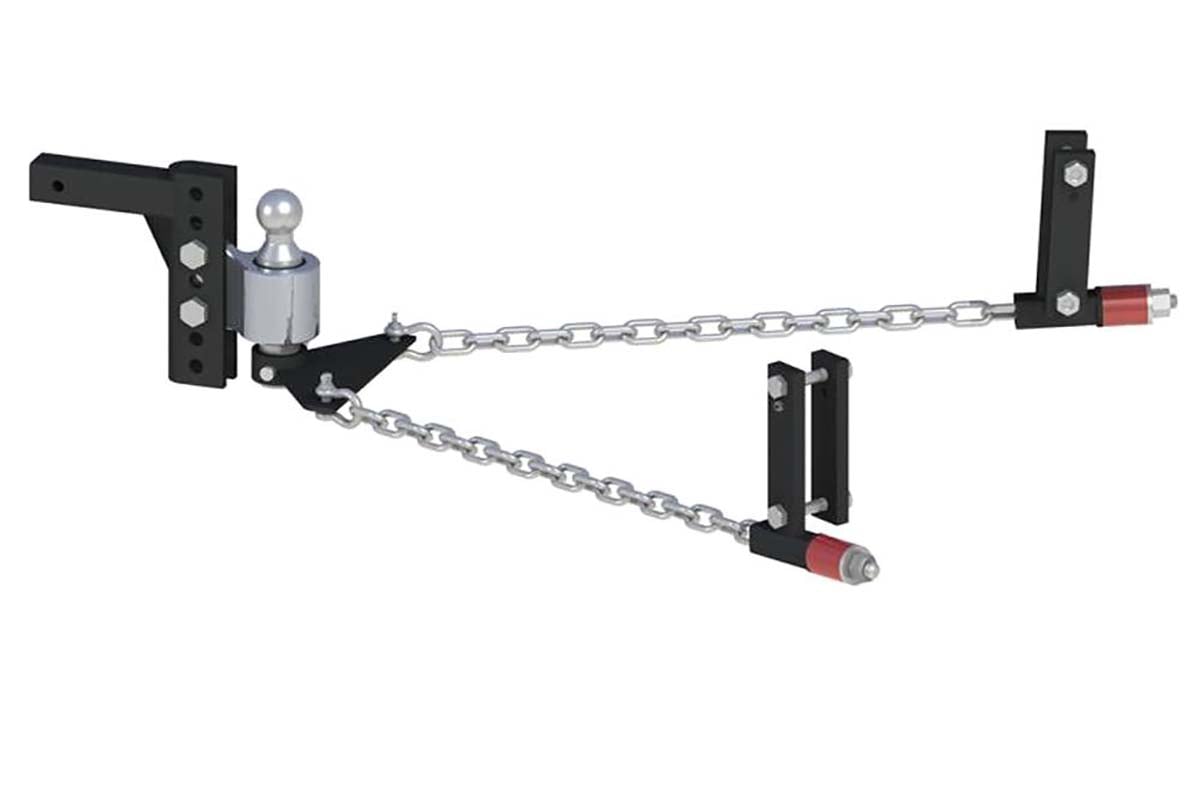A well-configured decoy spread can change the game for any waterfowler. However, what’s the recipe for that? What is the right decoy type? And who offers the best option? We’ll answer all these questions in this guide consisting of two parts. In Part 1, we’ll explore how to configure your decoy spread. And Part 2 will guide you through the best duck decoys by type.
Quack Quick Guide to Duck Decoys
Before we begin, here are two rules…
First, the specific use dictates your spread. That is the number of decoys, the type, etc. Second, there are no strict rules; experience usually wins. So be free to experiment with your decoys to find out what works the best for you and the birds in your location.
Decoy Species: All-Mallard or Mixed?
The primary function of a decoy is to fool birds into thinking they’re landing among their own kind. So it’s beneficial to match your decoys to the predominant species in your hunting area. However, there are nuances.
For instance, mallards are common in many waters. So in many scenarios, an all-mallard spread is a good starting point. However, using a mix of duck species to make a more contrasting spread can increase visibility and realism and, thus, your chances of success. Add several pintails or black duck decoys to your mallard spread and watch what will happen.
On the other hand, if you target a specific species like Wood Ducks, having more wood duck decoys than mallards in your spread can significantly increase your chances of attracting them.
When it comes to divers, simplicity is key. If you’re focusing on a particular diver species, your spread should match the natural environment and species in your region. Add puddle duck decoys if they are also frequent in your diver area.
Tip: Understanding the migration patterns and local populations of your hunting area will inform your selection process. It’s not uncommon for hunters to conduct pre-hunt scouting to gauge which species are currently in the area.
Gender matters too. Most duck species exhibit distinct sexual dimorphism, with males sporting more vibrant plumage than females. A spread that reflects the natural male-to-female ratio can make your decoy setup more convincing to flying flocks.
As for mallards, a good practice is to run half drakes and half hens. In the late season, running more hens than drakes – 6-8 hens and 2-3 drakes – can be effective.
Decoy Size: Standard vs. Magnum
Decoy size plays a significant role in your hunting strategy. Oversized decoys can be seen from farther distances, making them ideal for open water or large fields. On the contrary, smaller decoys excel in creating a more believable scene up close, especially in dense cover or smaller waters.
Decoy Materials: Plastic vs. Foam
The material of your decoys determines not only their durability but also how easy they are to transport and how affordable they are. While wood and cork have been traditional decoy materials for many years, now the market belongs to manmade materials.
Plastic Decoys: Molded plastic is the most common and versatile material. It holds paint well, is easy to carry, and offers a high level of detail. The trade-off is it’s more susceptible to stray shots due to being hollow.
Solid Foam Decoys: These are virtually indestructible and impervious to shot. They’re the choice for permanent spreads, but their heaviness and price tag make them less suited for the mobile hunter.
Decoy Keel: Solid vs. Hollow
Decoy keels affect how your spread is set up and maintained. It’s a choice that directly impacts ease of use and the type of hunting environment.
A decoy’s keel can be solid, with weight sealed inside, or it can be left hollow to be filled with water for ballast. For those who set and pick decoys frequently, solid keels offer convenience, while water-filled keels are a one-time setup, ideal for long-term arrangements.
Number of Decoys: How Many Is Enough?
The size of your spread really depends on a few things, like where you’re hunting, how easy it is to get to the hunting spot, and the birds themselves.
When you’re dealing with smaller waters, it’s best to keep your spread conservative – maybe around 6 to 36 decoys should suffice. But if you’re out on a big lake or river, being flexible is key. You might end up using as many decoys as you can handle.
Decoys in a portable spread should be manageable in size and weight for ease of transportation. However, balancing this against the potential competition from fellow hunters can be tough. In crowded spaces, more is typically better.
Other Types of Decoys
Alongside traditional decoys, there are non-conventional types that cater to specific situations or are designed to trigger certain behaviors in ducks.
Silhouette Decoys: These are perfect for field hunting or in shallow waters. They offer the realistic side profile of a bird in its habitat.
Stand-Ups: Full-body stand-up decoys offer the most lifelike representation but are bulkier. They are best for field hunting or as permanent fixtures in water.
Motion Decoys: Solar or battery-powered, motion decoys can be especially effective on calm days when the lack of wind leaves decoy spreads lifeless.
Inflatables and Soft-Foam Decoys: These are the most portable and can be used for a quieter hunt in sloughs or beaver ponds. They are less detailed but their movement in the breeze can be highly effective.
Confidence Decoys: Adding non-waterfowl decoys such as crows or gulls to your spread can create a more convincing scenario, especially when setting up in a multi-species environment.
DUCK HUNTING GEAR
Best Duck Decoys – REVIEW
How many decoys is the best for a beginner? If you’re asking for the most straight answer possible, we would say – a dozen will do for most duck hunting scenarios. That is why waterfowl brands have their decoys offered in 6 packs.
Now, to protect you from buying the wrong decoys that will only take the valuable space in your garage, we’ve prepared this guide to the best decoys.
How we chose duck decoys
At GRITR Outdoors, we’re deeply connected with the hunting community, especially waterfowlers. Our physical store sees a constant flow of waterfowling enthusiasts, each with their own preferences and experiences. We take every opportunity to engage in friendly conversations, not just as salespeople, but as fellow hunters curious about what works best in the field. These discussions provide invaluable insights into the brands and models that our customers trust and why they swear by them.
Additionally, many of us are passionate about waterfowling ourselves. We asked our team members who actively participate in duck hunting to share their personal experiences with different decoy brands. This insider knowledge helped us understand which features truly matter in the field.
So, our curated list reflects trusted products tested by the hunting community we serve, providing valuable recommendations for enhancing your hunting experience.
Best Overall: Avery/GHG Pro Grade XD Mallard Decoys
Standout features:
- IllusoryMotion – Paint job that creates the illusion of movement
- DuraFeather – deep feather detail, no glare, durable
- 60/40 DuraKeel – handles chop and current
- Decoys in different positions
Among the floater decoys, the Avery/GHG Pro-Grade XD series rises to the top. Firstly, made with a soft, supple material named DuraFeather, these decoys are incredibly shot-resistant and can endure a lot of wear and tear. One of our clients brought the Pro-Grade with him in his vehicle and was kind enough to show us his decoys, which were 4 years old. The drake he showed had just a couple of small shot marks, which were only visible when looked at closely.
The paintwork is where these decoys truly excel. Each mallard decoy is painted to be asymmetrical, just like real birds. The greens on the head contrast to create an illusion of motion, so when birds fly around the spread, the paint plays in the light, mimicking real bird motion and color. The blue on the wings is also very vibrant.
Their keels are designed with precision; they catch the wind just right, making the decoys move realistically against a natural current.
A set includes a practical half-dozen – 4 drakes and 2 hens. It’s an active pack, which means it includes 2 active drakes and 2 active hens. The remaining two are swimmer drakes.
Why we love them:
- Super realistic
- High-quality, durable paint that creates an illusion of motion
- Ultra-durable construction
Potential deal-breaker:
- High price for a 6-pack
Best Budget: Flambeau Masters Series Mallard Decoys
Standout features:
- Classic posture
- Sand-filled keels
- Detailed paint
- Assembled weight: 14 lbs (12-pack)
Now, let’s discuss the budget option – the Flambeau Masters Series. These decoys may not have the bells and whistles of their top-tier counterparts like GHG and Avian, but what they offer is quite bang for the buck.
The material is hard plastic, of course, and while it’s pretty lightweight, the trade-off is that the paint can crack over time if not properly stored in padded bags.
The paintwork won’t win any awards for artistry, but it’s pretty good and does its job well. The drake and hen colors are vivid and visible, ensuring the best chance of catching the wildfowl’s eye. The keels are sand-filled.
The set includes a dozen decoys, and the price ranges from 70-80 dollars, depending on where you purchase them.
So, these affordable duck decoys are quite popular with waterfowlers. The reviews are mixed, but hey, look at the price! Overall, these are great lifelike decoys that can last for three seasons for sure, or even longer with proper care.
Why we love them:
- Decent price for the set – $70-$80 for a 12-pack
- Good life-like painting out of the box
- Lightweight
Potential deal-breakers:
- Because they are hard plastic, they are susceptible to shot and paint chip
Best Field: Avian-X AXP Fusion Pack Full Body Mallards
Standout features:
- Ultra-natural paint schemes
- Life-life body positions
- Assembled weight: 12.05 lbs (6-pack)
These Avian decoys are among the most realistic field full-body decoys. The paintwork is exceptional, capturing the full spectrum of mallard colors. The body positions are very lifelike; the pack includes 2 feeders, 2 stretch feeders, 1 high-head, and 1 low-head. Speaking of bodies, the material is a rubberized plastic resistant to impacts and paint chips.
The motion system is wind-activated, and with the right stakes, you can prevent the decoys from spinning in a full circle, which, of course, makes them appear more natural to the birds.
So, these Avian mallard duck decoys are all great, but the pack consisting of 6 decoys – 4 drakes and 2 hens – is quite pricy. However, most field waterfowlers tend to add goose decoys to their spreads, so you’ll need considerably fewer full-body duck decoys and, consequently, won’t have to spend a lot of money.
Why we love them:
- Most realistic full-body field duck decoys
- Durable and resistant to paint cracks
- Life-like feeder pack
Potential deal-breakers:
- High price
Best Lightweight: Heyday HydroFoam Mallard Decoys
Standout features:
- HydroFoam Construction
- HollowCore Body
- SmoothMove Dual-Keel
- Fool ‘Em Finish
- SitRight Deployment
- Easy-Attach Eye Bolts
- UpRight Weights
For mobile waterfowl hunters, weight is crucial for covering more ground. Constructed from a single piece of lightweight and buoyant closed-cell EVA resin and having a hollow body, Heyday’s HydroFoam Mallards represent the lightest 6-pack decoy set available.
The paintwork on Heyday’s mallards is vibrant, and the texturing is of a high level, making the decoys appear almost photorealistic.
The material from which the decoys are made offers several additional advantages. For instance, it renders them quiet and prevents them from clanking together, unlike plastic decoys. What’s even more significant is that their lightweight nature allows the decoys to move freely in the current and wind.
The symmetrical dual-keel design and the proprietary UpRight weights ensure the mallards remain stable, even in extreme weather conditions.
Why we love them:
- Lightweight, buoyant, quiet, and high-textured material
- Hollow body that always deploys right
- Stable in the wind
Potential deal-breakers:
- High price
- Some hunters anticipate a lower weight
Best Windsock: White Rock Decoys Headless Mallards
Standout features:
- 12-pack realistic windsock decoys
- Fiberglass stakes
- 6 drakes and 6 hens
Windsock decoys bring a cool twist to waterfowl hunting, with their light and wind-friendly designs. White Rock Decoys steps up the game with their Headless Mallards. These decoys are all about being efficient, realistic, and easy to carry. The headless look might raise an eyebrow at first, but it actually makes them lighter and easier to pack, so you can take more on your hunting trips with less hassle. And don’t be fooled by their simplicity – these windsocks nail the mallard look, making sure ducks from afar see them as the real deal.
Their Tuf-Snap Collapsible Support Systems keep the decoys looking lively even in gentle breezes, while the lifelike printing ensures they blend perfectly with any habitat. Setting them up is a breeze, and they’re a go-to for hunters who need to cover a lot of ground fast or switch spots often. Plus, the lifelike movement mimics active ducks, drawing in those feathered friends from far away, even on quiet days.
Why we love them:
- Great for late-season feeds
- Ultra-lightweight
- Easy to transport and store
- Realistic paintwork
- Easy to set up
- Affordable
Potential deal-breakers:
- May not be as wear and tear resistant as other counterparts
Best Oversized: Avian-X Topflight Mallard Decoys
Standout features:
- Magnum decoys
- Weight-forward swim keel
- Mallards in various positions
As we’ve mentioned, oversized decoys are helpful when hunting migrating ducks on large water bodies. So, let’s introduce the best option in the magnum category – the Avian Topflight. These floaters boast large profiles – 18 inches overall – making them more visible from a distance compared to standard decoys.
The material is a soft plastic that doesn’t crack in cold water and prevents the paint from chipping off if shot. The paintwork, supported by carvings on these beefy mallards, is a masterpiece – very realistic, as is typical with Avian duck decoys. The keel has an oversized profile that handles choppy water nicely.
One serious drawback is a small gap in the mounting point through which a rig or decoy line could break. But overall, these are excellent magnum decoys. The pack features 4 drakes – 2 high-head and 2 low-head – and 2 hens, one swimmer and one high-head.
Why we love them:
- Realistic paintwork and detailed texturing
- Durable and resistant to paint cracks
Potential deal-breakers:
- High price
- Gap in the mounting point
Best Spinner: Avian-X Powerflight Mallard
Standout features:
- Lifelike colors
- 360-degree spinning wings
- Runs up to 16 hours
- Remote control with a 60-foot reach
- Heavy-duty stake
Well, Avian, again. As you can see, this waterfowling brand has lots of great decoy designs, one of which is the Powerflight spinner.
The decoy excels in creating a believable and enticing scene for passing waterfowl. With wings rotating 360° and boasting a vibrant paintwork, especially that blue, the decoy creates a dynamic movement that mimics live ducks. Overall, the paint application is superb, maintaining its luster and precision detail through sun, rain, and stray shot.
Best Pulsator: Higdon XS Pulsator Mallard
Standout features:
- Lifelike colors and textures
- 7-hour run time
- Built-in timer
- Lightweight
The lifelike rocking and bobbing motion mimic a feeding mallard so convincingly that it sprays water across the spread, creating the illusion of ducks actively feeding. On calm days, introducing one or two Pulsators into the scene breathes life into the decoy spread, attracting wary ducks with subtle ripples and movement. The foam-filled, one-piece design offers a generous seven-hour runtime, ensuring prolonged use even in shallow waters as shallow as six inches.
Wrapping Up the Spread
So here they are, the best duck decoys in different categories. Though we covered only mallard decoys, you are now equipped with all the necessary information about creating a mix of species in your spread and the brands that deliver the best in class.
If you’re looking for pintail, teal, wood duck, widgeon, gadwall, or diver duck decoys, explore the brands we mentioned above – Avian, Avery/GHG, Heyday, and more. And for advanced goose decoys, try White Rock Decoys.
Duck decoys are used by hunters to attract real ducks into shooting range. They are designed to mimic the appearance and sometimes the movement of ducks, making them an essential tool for waterfowl hunting.
The number of duck decoys needed can vary based on the hunting environment and personal preference. In general, a spread of 12 to 36 decoys is sufficient for small bodies of water, while larger areas may require 50 or more decoys to create an effective setup.
There are several types of duck decoys, including floaters (for water use), full-body decoys (for land), and shell decoys (also for land). They can be made from various materials like plastic, foam, or rubber, and some feature motion systems to simulate natural duck movements.
Setting up duck decoys involves arranging them in patterns that mimic natural duck behavior. Popular formations include the “J” shape and the “U” shape, which create an open landing zone that can attract flying ducks. It’s also important to consider wind direction and visibility.
While specific decoy species can be more effective for targeting certain ducks, general mallard decoys are versatile and can attract various duck species. However, adding a few species-specific decoys to your spread can increase your success rates for those species.
Proper maintenance includes cleaning your decoys regularly, checking for and repairing any damage, and repainting them as needed to keep them looking realistic. Storing them in a cool, dry place away from direct sunlight can also help prolong their lifespan.
Motion decoys can add realism to your spread by simulating the movements of live ducks, which can be especially effective on days with little to no wind. However, they are typically more expensive and require additional setup. Moreover, in the late season, ducks may become wary of all motion decoys.
The “best” material can depend on your needs. Plastic decoys are durable and widely available, foam decoys are lightweight and good for hunters who travel by foot, and rubberized decoys offer a realistic look but can be more expensive.

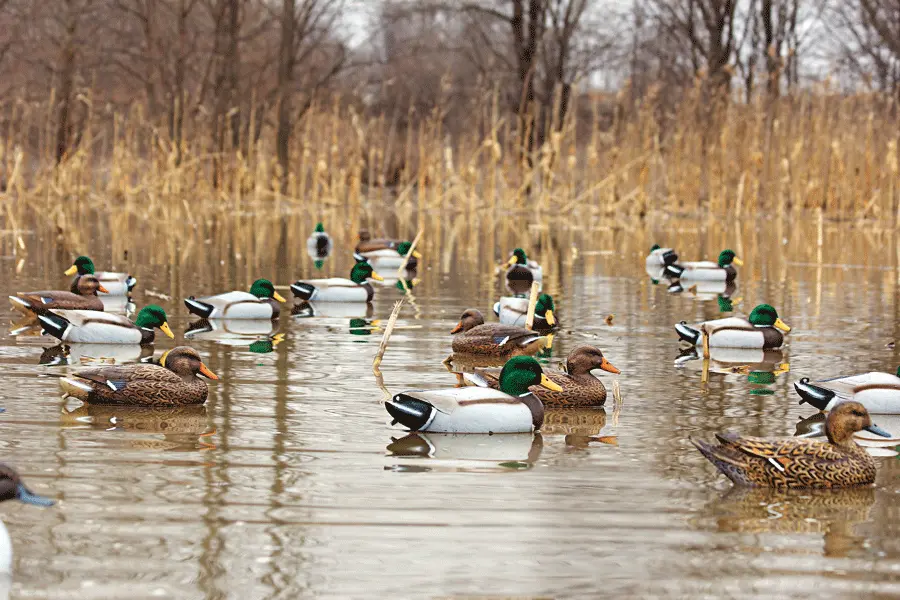
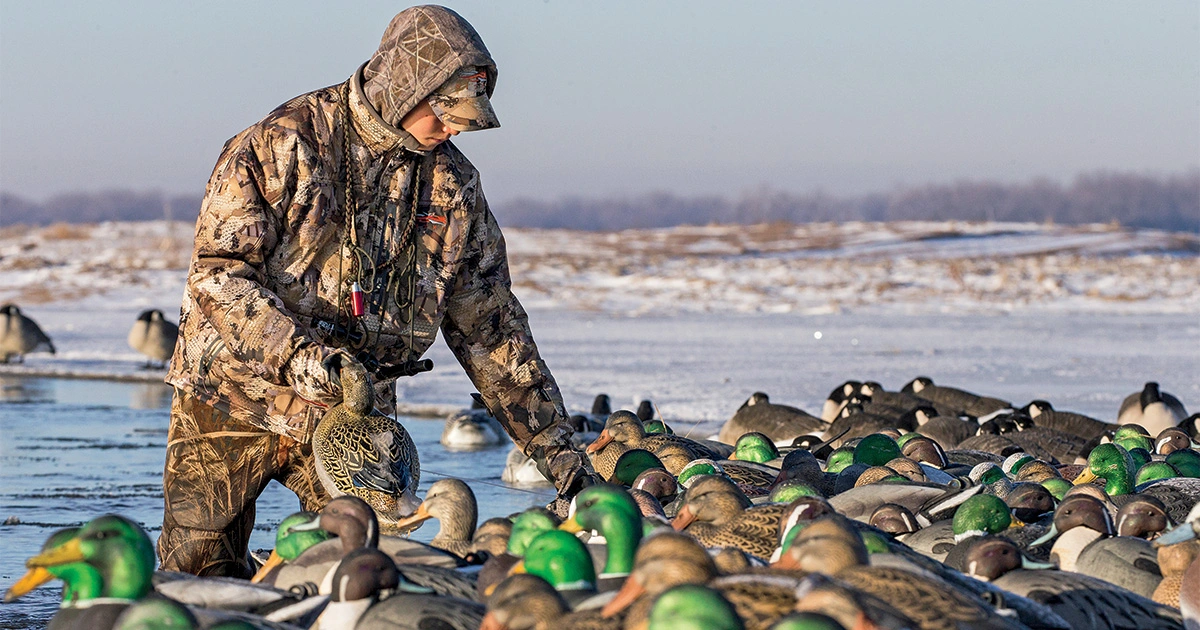
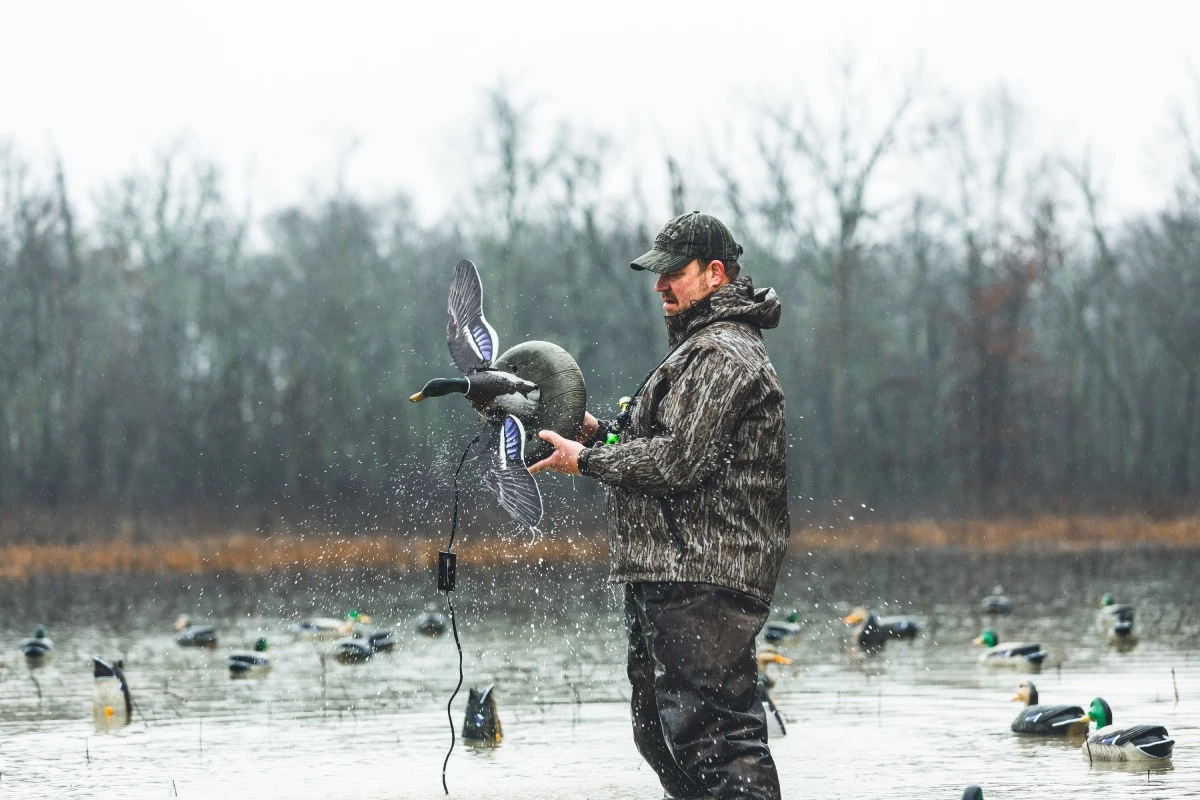
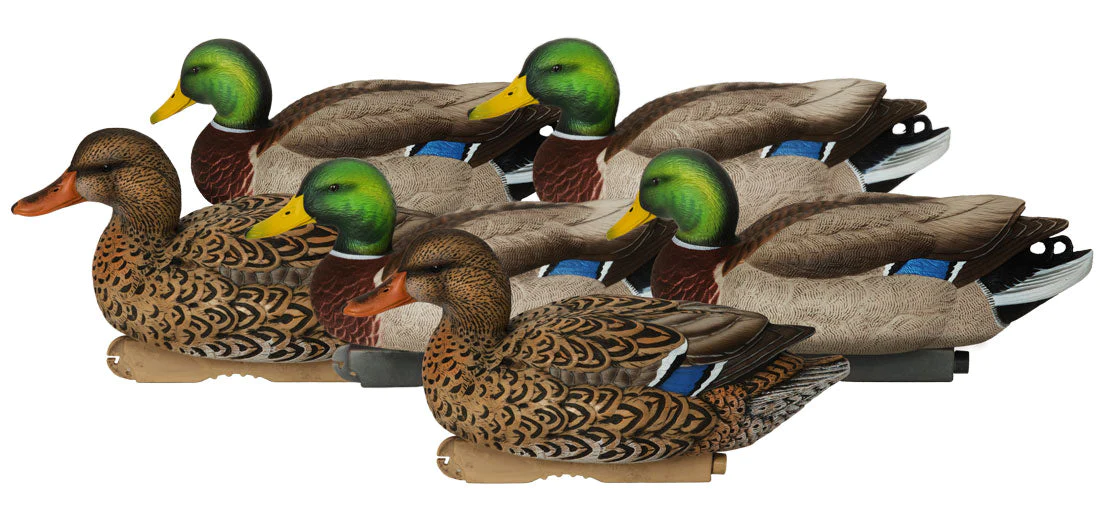
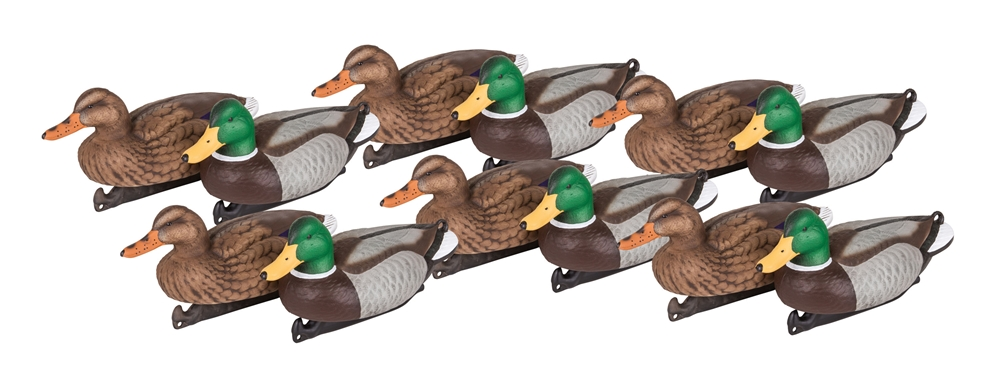
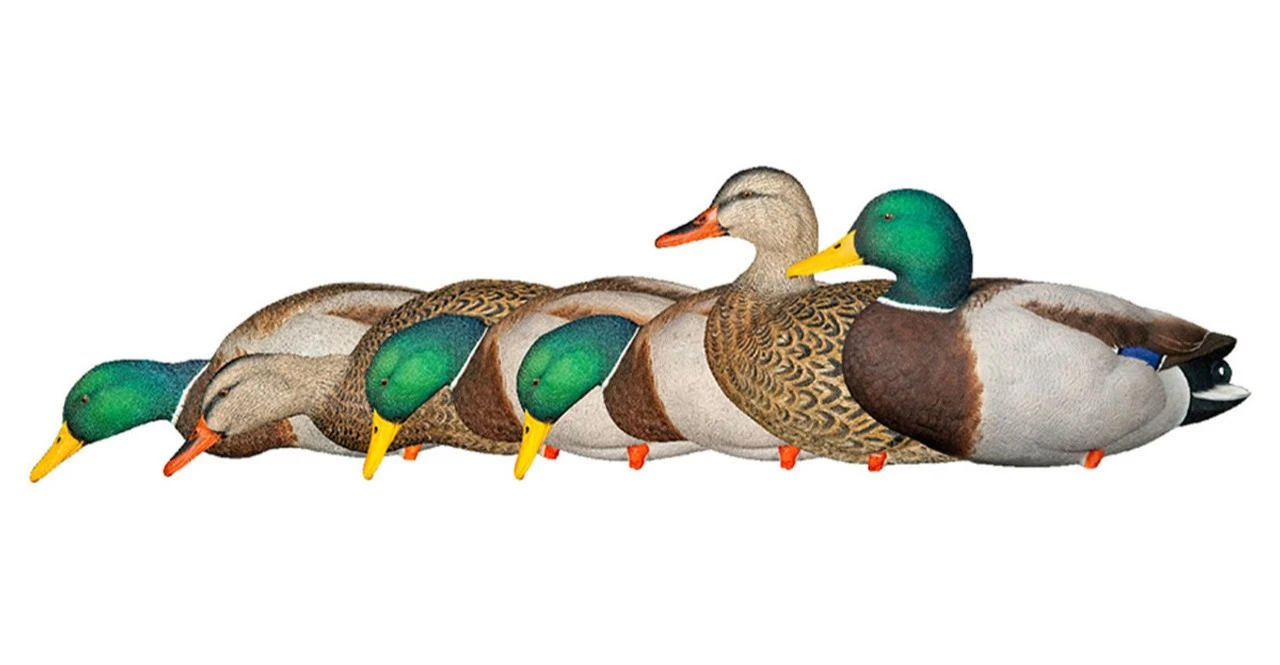
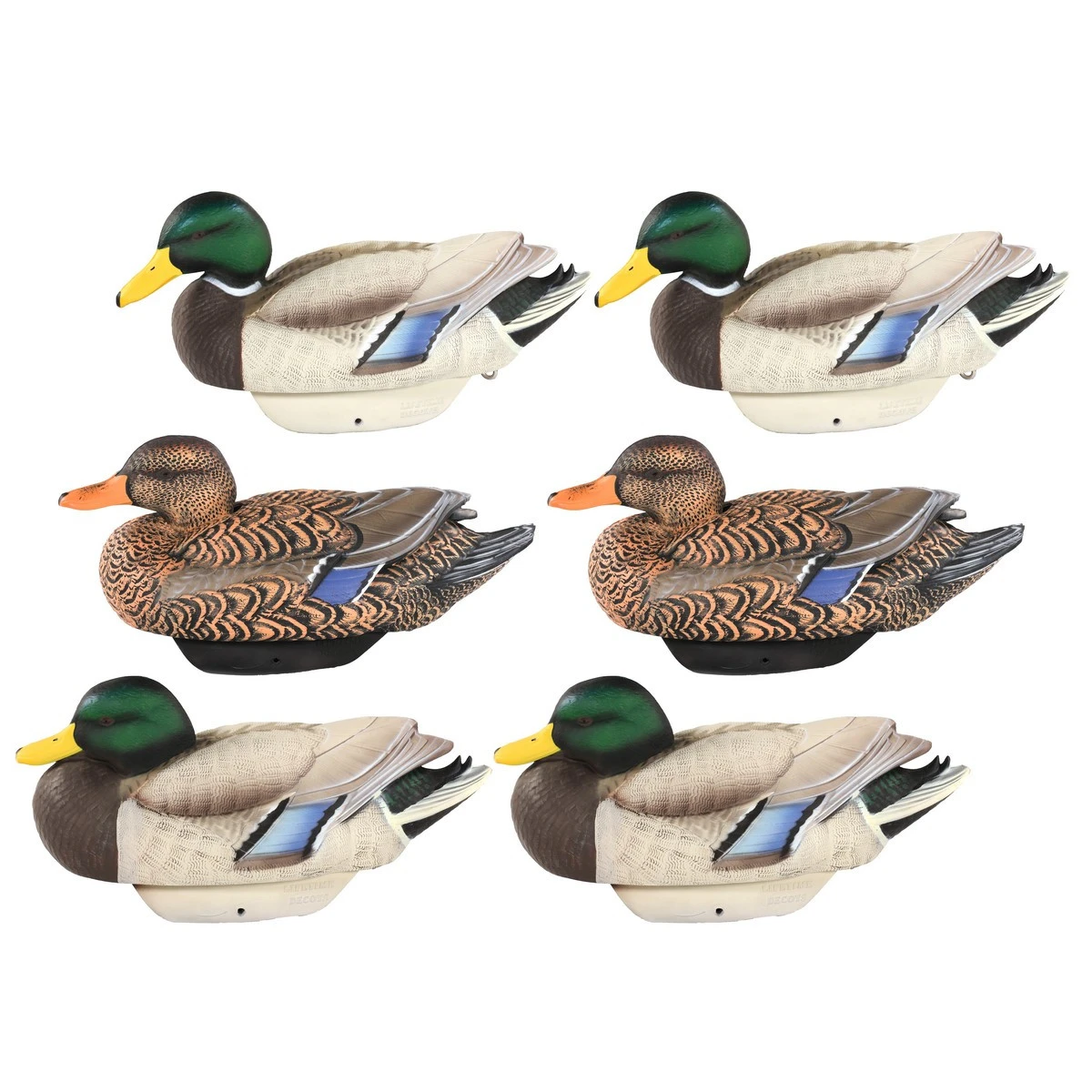
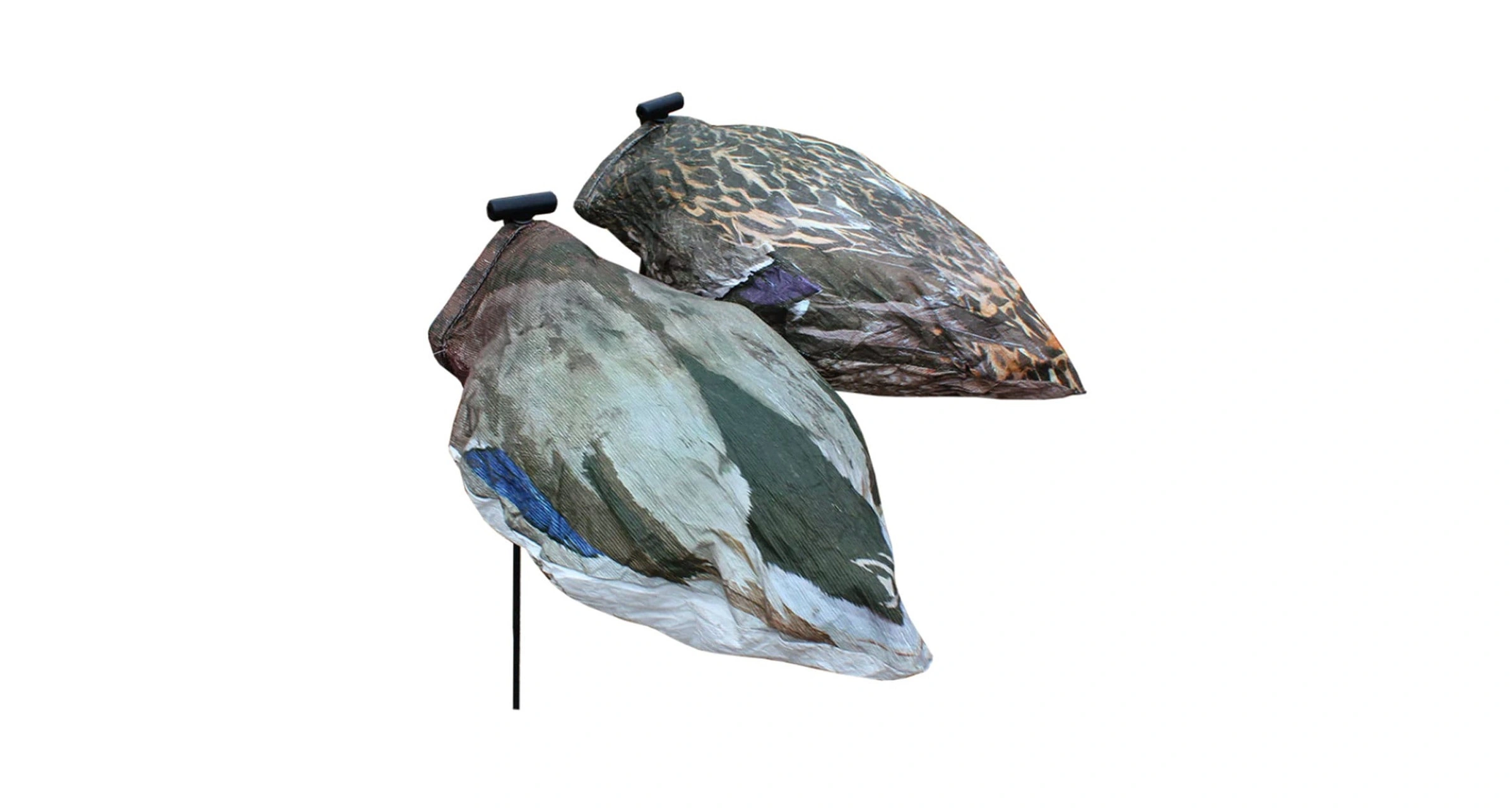
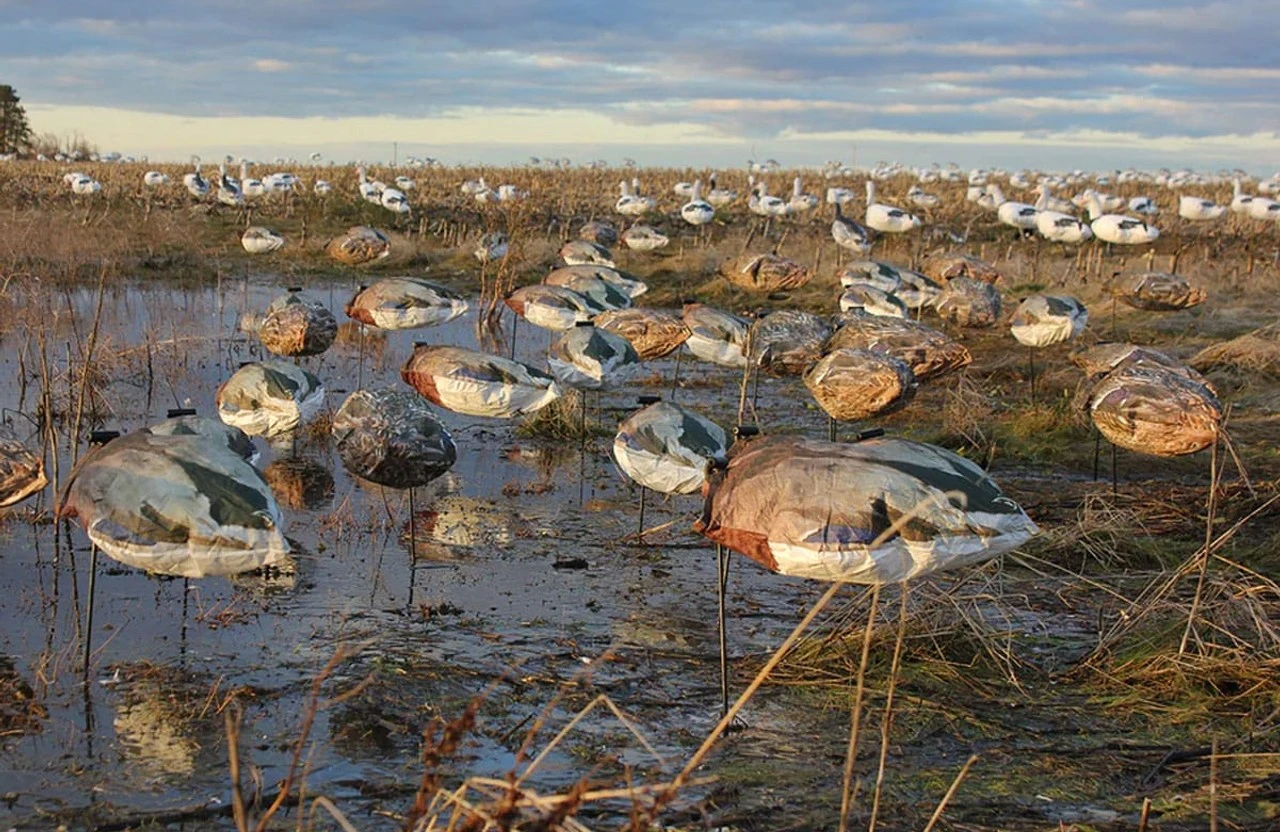
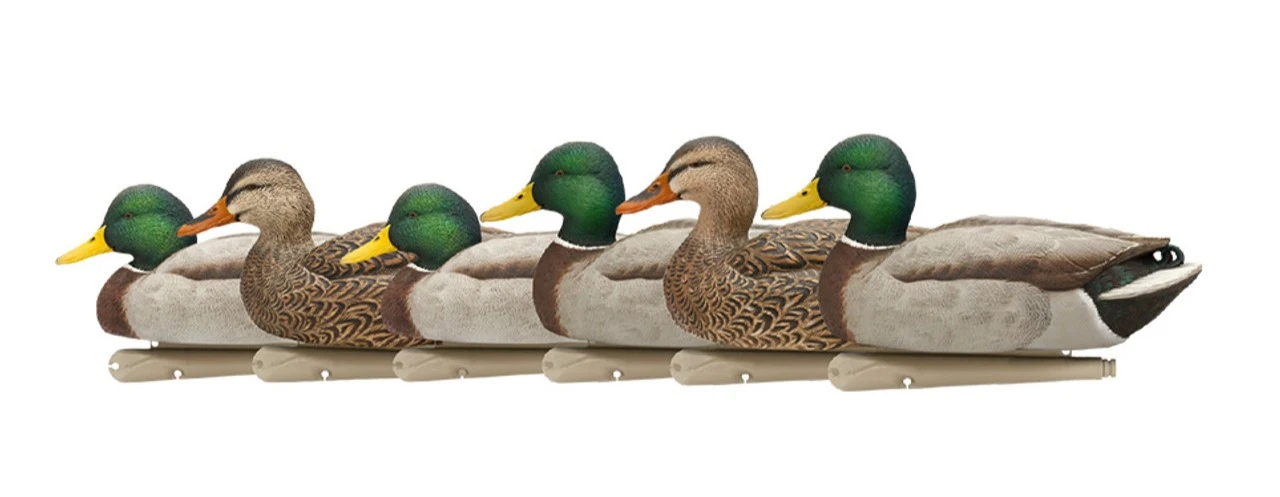
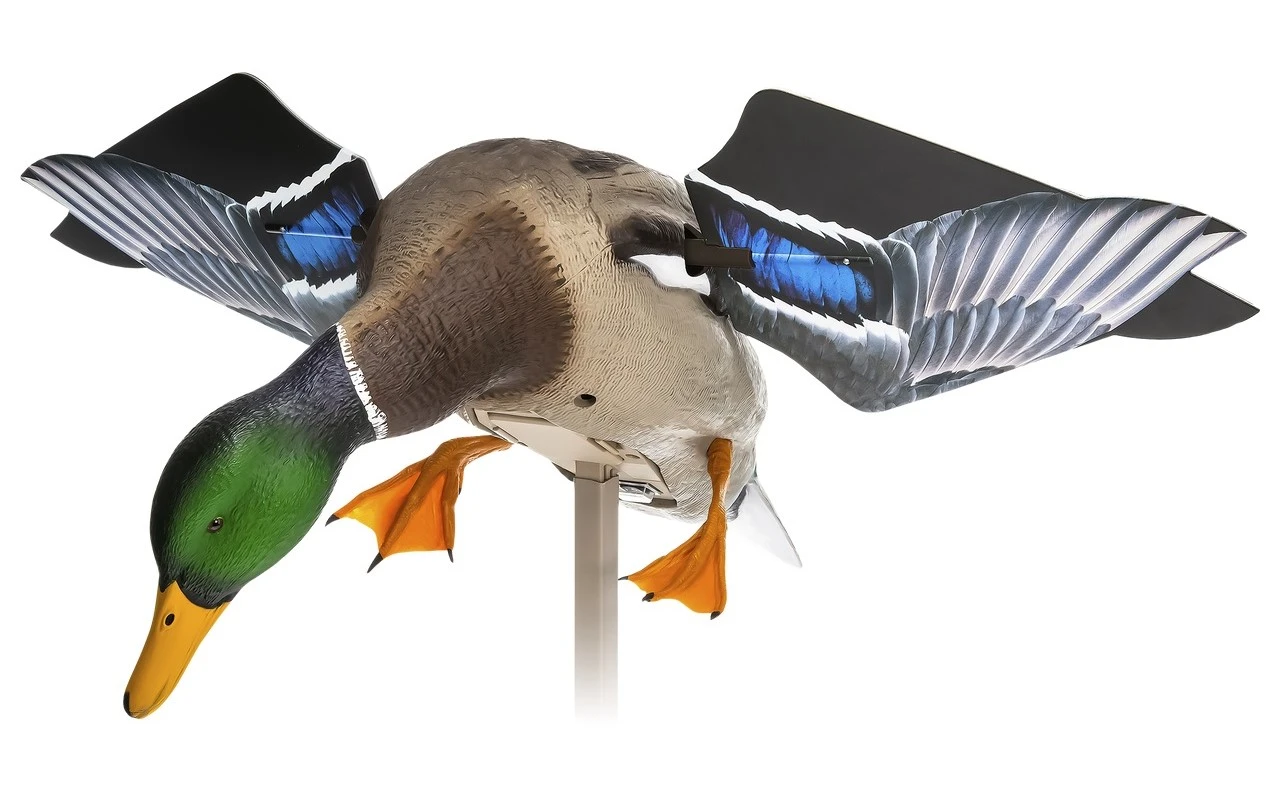
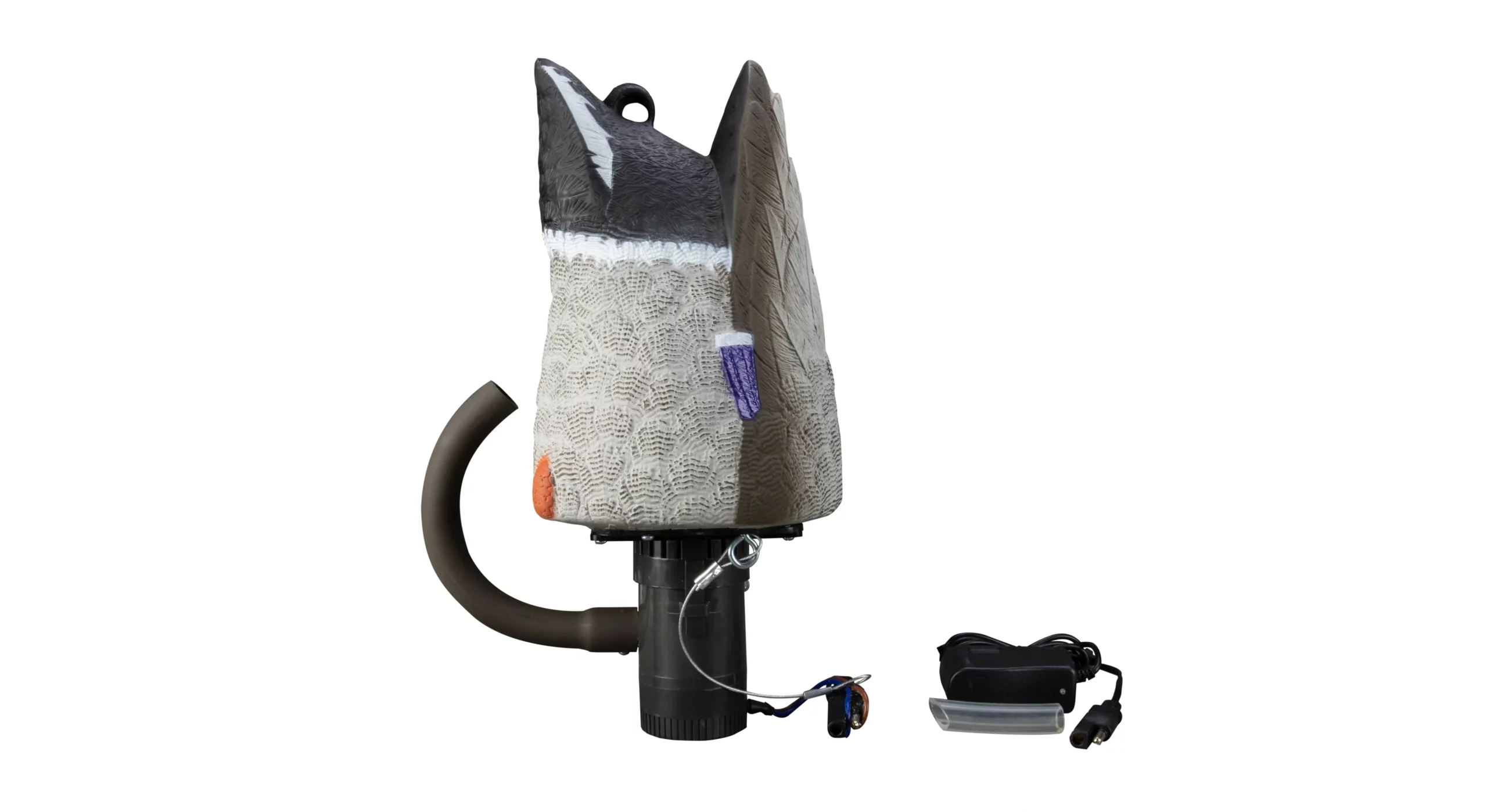
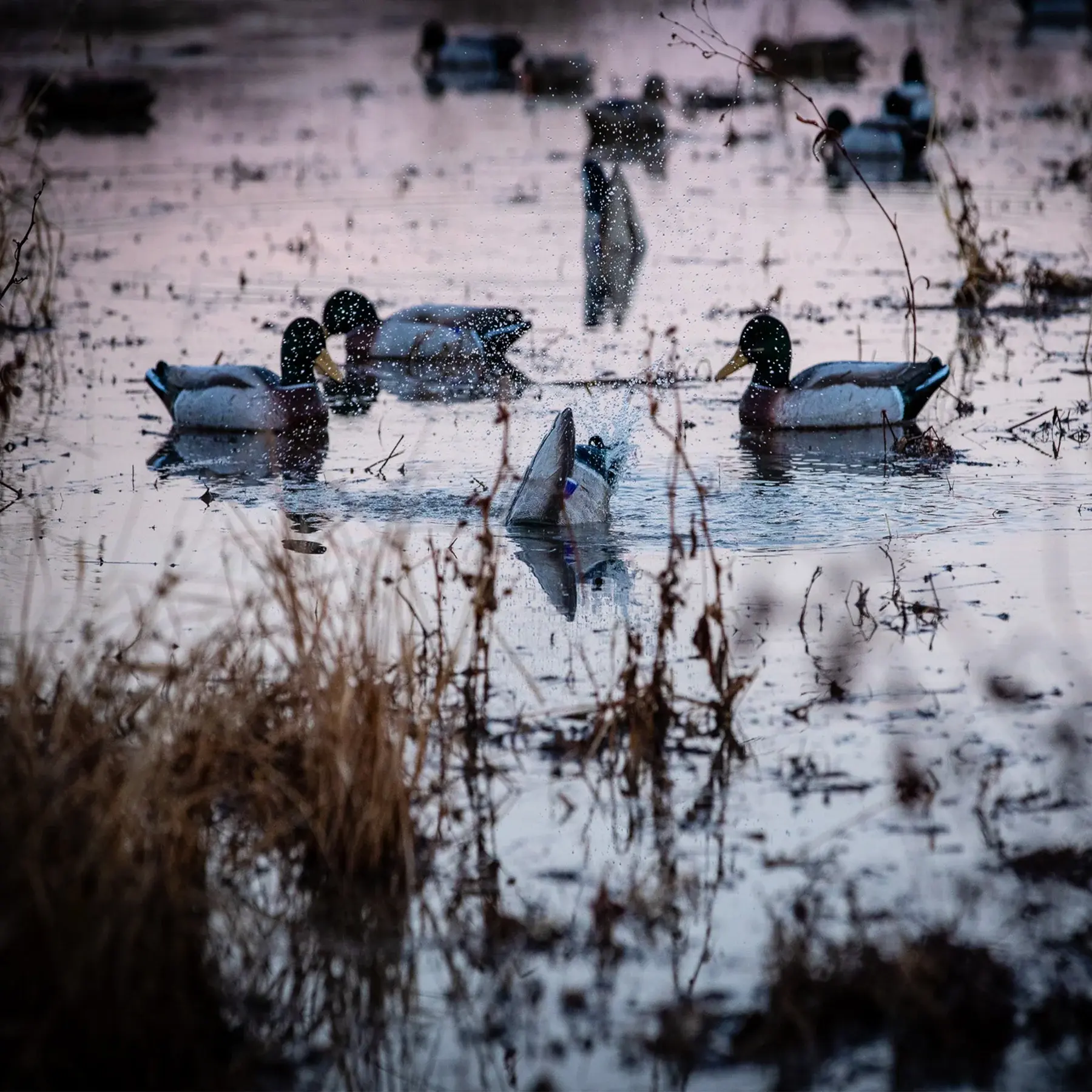

![Bass Fishing "When & Where": Best States, Spots, Seasons [Guide] 16 where-and-when-to-fish-for-bass](https://blog.gritroutdoors.com/wp-content/uploads/2024/03/where-and-when-to-fish-for-bass-380x220.webp)
